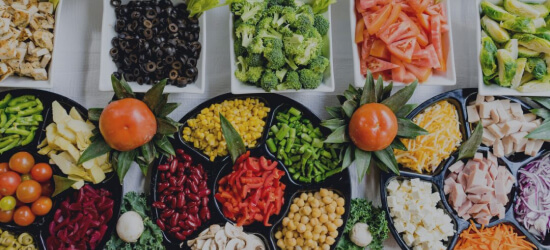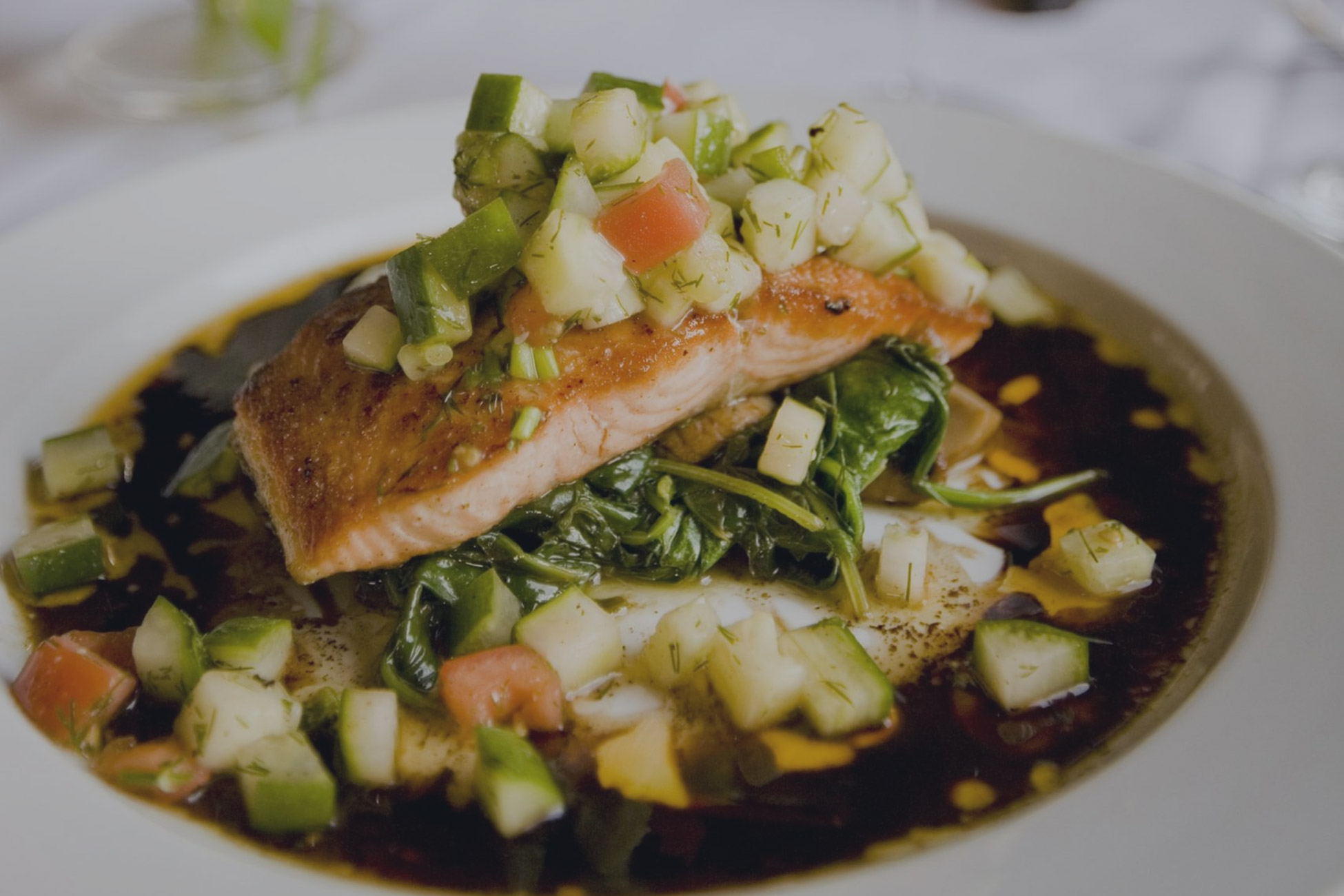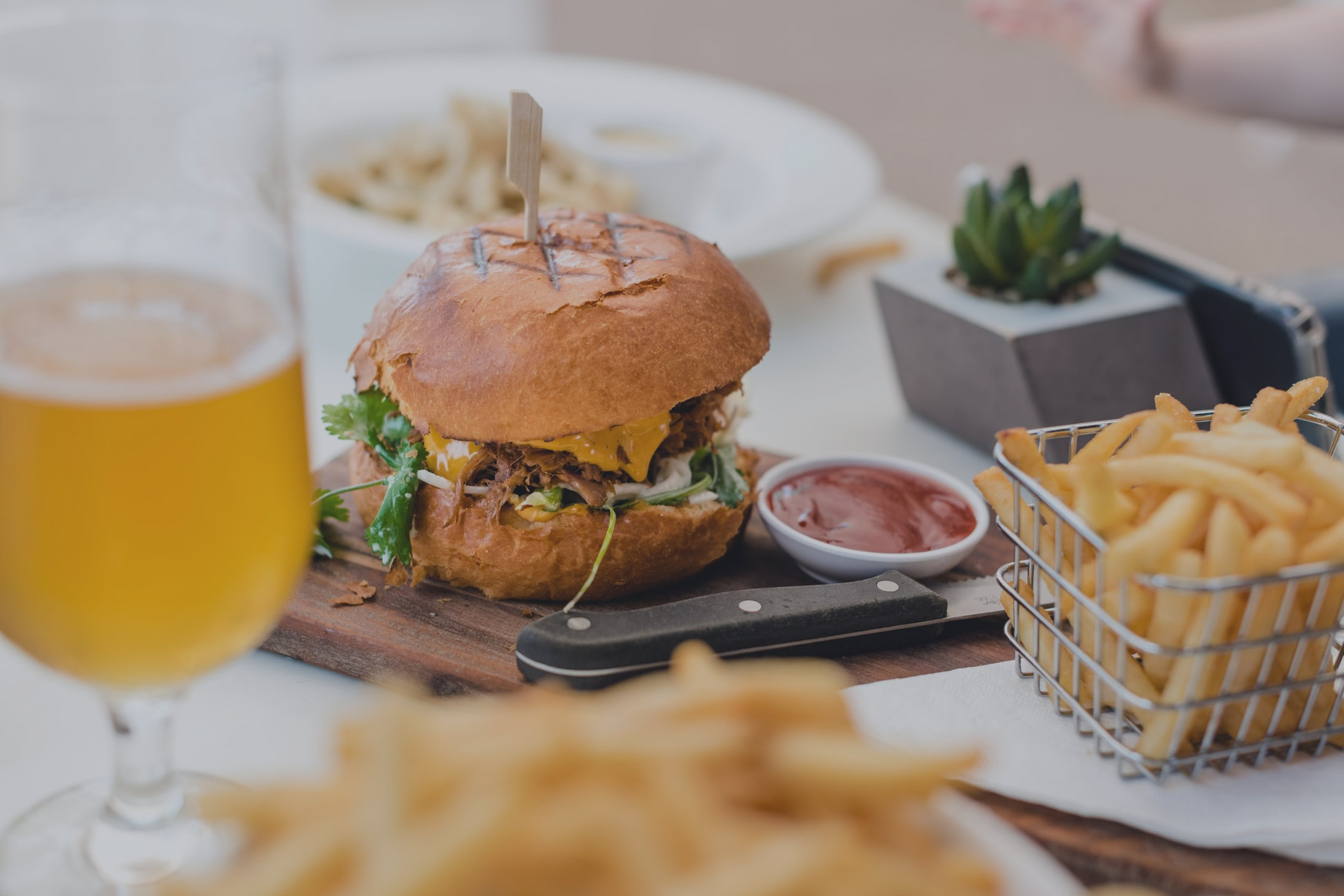

Welltory is the Ultimate HRV App





Healthy eating it is not about weight loss. If you watch your diet, you will be healthier, more productive, less stressed, and save money on medicine.
Here is why you need a healthy diet:
So if you begin to eat healthy, you have a chance to increase your quality of life and productivity right now.

Healthy eating is not a restricting diet. You don’t have to eat some specific food or stay hungry. Eating healthy means eating a variety of foods, which give you all the necessary nutrients to keep you feeling vigorous.
To be more clear, your diet can be unhealthy for two reasons:
To prevent the risk of diseases linked to the unhealthy food consumption, you should refrain from a few products:
The proper amount of nutrients and calories depends on your age, weight, height, and goals – do you aim to lose weight, gain weight or keep it stable. Online food trackers and apps like See How You Eat, Lifesum, FatSecret, or MyFitnessPal can help you to understand how many calories and nutrients do you need and regulate your portions.
Not really. Meal planners are not so difficult to use. Also, you can use some simple techniques which will free your time and brain from calculations.an be unhealthy for two reasons:
1. Many trackers have approximate weights for many products. So you can just write that you ate one banana, one teaspoon of honey, or one slice of a whole grain bread. Of course, if you want to lose weight, you have to be more strict about the number of calories you consume. In that case, you will have to weigh your food. But the good news is that you will do it only for the first two or three weeks. After that you will study to estimate the weight just by your eyes and most of your food will be in the memory of tracker you use.
2. Use the palm method. The amount of each type of food is associated with different parts of your hand. For women, you should use only one hand, for men you need double the size for each kind of food. Here are the parts you use to measure your dish:
3. You can use the Healthy Plate System every time you make your dish or to estimate your menu for the whole day or an even more extended period.
1. Vegetables and fruits
It should be ½ of all your portion – they decrease blood sugar and help you control appetite. Also they reduce blood pressure, prevent heart diseases, reduce cancer risk, and support your gastrointestinal health. The only plant that is not recommended is the potato, because it can increase blood sugar if you eat too big portions.
2. Whole grains
1/4 of your plate. Brown rice, bulgur, buckwheat and other types of whole grains contain a lot of necessary minerals and help you maintain your blood sugar all day long. That means you will have a lot of power to work and will not have cravings because a steady blood sugar level doesn’t allow you to feel hunger. Avoid refined grains like white rice, noodles, ready-to-eat cereals, and pastry. They increase a blood sugar and don’t have valuable nutrients.
3. Protein
Approximately ¼ of your plate should be filled with meat, fish, poultry, eggs, nuts, and beans.
Your muscles, immunity, heart, and respiratory system need protein. The best type of protein is the one from animal sources because it contains all necessary amino acids, but you have to be conscious about saturated fats; they are not harmful, but very high in calories, and you can consume too many calories if you eat too much red meat.
4. Water
To maintain a proper amount of your body fluids you have to drink at least 2 glasses of water without sugar. It helps you to control calories, because water makes you feel full before you overeat.
5. Oil
Use a moderate amount of healthy oils like olive oil, canola oil, and other unrefined oils. It can improve your blood cholesterol and also it is a good source of omega-3.
Put this picture in your refrigerator, and use it every day as a guide for choosing food.
You can use any method but remember that keeping a healthy diet means eating foods that contain all the nutrients your body needs in the appropriate amounts for your body condition.
No. Most of the popular are diets based on a disbalance of macronutrients. No restricting diets can be called healthy. A healthy menu contains fiber, proteins, fats, and carbohydrates. The habit of sticking to any “food system” or mono-diet leads to a deficit of vitamins, macro-, and microelements. The consequences are gut diseases, chronic fatigue, and immunity problems.
68,000 people participated in a large study funded by the National Institutes of Health and the American Diabetes Association. The scientists compared the effectiveness of different diets. Low-carb diets were found more effective than diets with a low fat content, but researchers also note that in the long run, all diets are ineffective.
Let’s see more details about most popular low-carb diets.
This diet promises rapid weight loss and an increase of energy because you eat a lot of vegetables. It looks like a good idea.
You can eat:
And you should exclude:
But there is reliable research suggesting that eating whole grains improves our health, and the benefits of beans are also obvious to scientists, so the restriction of these products seems an unreasonable step that can lead to a lack of necessary nutrition.
The British Dietetic Association includes Paleo on their list of worst diets. The association warns that the Paleo diet can be a danger to your bone health by creating a calcium deficit and can cause a shortage of other nutrients and unhealthy relationships with food.
The very high-protein Atkins diet is famous for its carbohydrate-restricting rules. By cutting carbohydrates, the body should go into ketosis and burn off stores of fat.
You can eat:
And you should exclude:
Studies at Duke University have recorded that among followers of this diet 70% have constipation, 65% have bad breath, and 54% have headaches. The deficiency of nutrition can make us weak and listless. The main thing missed by the propagandists of a low-carb diet is that carbohydrates are the vital source of energy and the average person not engaged in physical work should consume 300-400 grams of carbs per day. If you exclude carbs from your diet, energy for recovery will be taken not only from subcutaneous fat but also from your muscles.
To avoid problems with high levels of cholesterol some people begin a low-fat diet. They cut back on meat, fried food, dairy products, and eggs. Low-fat products are trendy in supermarkets. But scientists say that people who keep low-fat diet have a 30% higher risk of early mortality. Реорle have to replace fats in their diet with carbohydrates. This can lead to obesity and cardiovascular diseases. So the habit of sticking to any diet leads to a deficit of macro- and microelements. The consequences are gut diseases, chronic fatigue, and immunity problems.
The idea of restricting yourself to any diet is also hard for busy people, because it requires a lot of immediate and stressful changes in the menu. Healthy eating is much simpler and better for your health.

It depends on the type of vegetarian diet you choose. Studies show that the exclusion of animal sources of protein can protect from cardiovascular diseases, obesity, and cancer. But scientists warn that deficiencies in B-12, which can be found naturally only in animals products, and in vitamin D and calcium, which can be found in eggs and dairy products, can be a potential problem for vegetarians. In the long term, it can lead to problems with one’s bones, skin, and nervous system.
If you want to keep a vegetarian diet, you should consult with your doctor. Your physician will carry out all necessary clinical analyses to make sure that a vegetarian diet is not dangerous for your health. And while you keep that diet you should visit the doctor regularly to control your vitamins, macro- and microelements.
Let’s see what type of vegetarian diet can be safe and healthy for you:
Most of the vegetarian diets are not recommended because they can lead to a severe deficit of nutrients, but you can try some semi-vegetarian diets — they are healthy and safe.
You will begin to see results immediately, and you will notice more and more positive effects after the first week, in a few month, or in five years. Most of the fast effects are linked to your energy level and mood; long-term effects are related to the risk of diseases and longevity.
Immediately after you begin to watch your diet:
Within a few weeks to few month:
Within a few months to a year:
Within 5 years:
All these benefits listed above are more side-effects of a healthy diet than results. They will help you to enjoy your new lifestyle and keep eating healthy. Serious health improvements and a decrease in the risk of the various type of diseases depends on your age and the condition of your health before you begin to watch your diet.

Nothing is forbidden if you don’t eat too much. But of course, there is some food you should try to exclude from your everyday menu.
The ingredients you should avoid:
As you can see, there are not so many foods you should avoid, but reducing your consumption of processed food, fast food, low-fat products, and canned food–as well as being conscious about reading ingredient lists–can be an excellent improvement of your diet.
No, you don’t have to eat only organic food, but some organic products can be better for you.
Special fitness food is good business nowadays. There was a significant FDA study showing that people can make poor dietary decisions based on the labels “dietary”, “fitness” or “added vitamins.” Food manufacturers can put in a minimal amount of natural ingredients, fiber, or vitamins to be allowed to put a fashionable “healthy” label on their products. From the full range of terms only “organic” is regulated by law. Other types like“hormone free,” “free-range,” or “natural” are just a publicity stunt.
When you buy food, you should look at the list of ingredients, not at the labels.
Stanford University conducted research to compare organic and conventional food. The conclusion was that there is no significant difference in nutrient content. According to the study, organic food is lower in pesticides. Some pesticides are carcinogenic and can be a cause of a certain type of allergy, but only if you consume too much. All analysis of conventional food has shown pesticide levels within safety limits.
The widely known organic food accreditation is created by U.S. Department of Agriculture. There are some special conditions for food to be eligible to be called “organic.” If you want to buy organic, you should understand the labels:
The Environmental Working Group recommends buying only some products organic — those that are most likely to contain a lot of pesticides:
EWG also gives recommendations about clean products. EWG analyzed pesticides tests of these items and found the lowest levels of pesticides in these products. You can buy them without organic label and don’t be afraid of pesticides:
If you don’t have the opportunity to buy any organic food, you can use conventional food, but there are some rules to help you to feel safe with what you eat:
Make small steps and change your lifestyle slowly. Pay attention to your needs and don’t try to make changes extremely fast.
There are 3 simple steps that will help you enjoy your new lifestyle and not struggle with yourself:
1. Don’t try to change everything in one moment, but change your diet gradually.
Incorporate one healthy change and keep it up until it becomes a habit; then make another one.
2. Be sure that you consume enough carbs, healthy proteins and fats. You will not crave unhealthy things if you get all necessary nutrients. For that step you need our Healthy Plate — use it every time you choose your meal. To identify your good and bad eating habits you should track what you eat. The best way to do it is a food diary – notes where you track the time you eat, the food, and portion sizes. You can do it on paper or with these apps: See how you eat, Food diary, Lifesum, Fatsecret, My diet coach.
3. Trick your brain
If you want to eat sweets, it works like a drug addiction. Gradually you need more and more sugar or chocolate to get pleasure. And willpower will not help limit consumption of your favorite foods, because the body will produce more ghrelin, the hunger hormone, and you will feel the danger of starvation. It will lead to cravings again and again. So we have to be smarter and just trick our brain on the way to a healthy lifestyle.
How to trick your brain and not eat too much:

You can eat at any time you want: a timetable is not so important. But you should pay attention to what you eat and avoid strong hunger or overeating.
If you have time to eat in the morning:
If you eat only in the evening
If you never know when you will have an opportunity to eat:
As you can see, you don’t have to restrict yourself with any timetable, but you have to be conscious about calories and nutrition as you eat.
These small tips will help you to be more conscious of food when you do your shopping:
Here are some tips for finding really good food:
If you remember these simple rules your grocery basket will always be full of healthy stuff.
We have some easy life hacks you can use every day for your advantage without spending too much time cooking and shopping.
The simple things you can do, if you don’t have time for anything:
If you can buy food once a week:
There are some foods you don’t have to cook:
If you sometimes have a moment to cook:

Enjoy your time and remember that if you eat in moderation, no food is forbidden.
There are some tricks which help you to eat healthier when you are not at home:
Healthy eating should improve your life quality and not restrain your relationships with the people around you.
Yes. Here it is:
Eating healthy can look like a difficult challenge. But if you stick with our simple steps and don’t try to change everything all at once, it can be an easy and exciting experience that will lead you to better health and quality of life.
Healthy eating is much better and easier than strict diets, and once you begin implementing good eating habits in your life, the process will get more relaxed.
Welltory Team, 23 Dec. 2021
 App Store
App Store
 Google Play
Google Play
 Huawei AppGallery
Huawei AppGallery
 Galaxy Store
Galaxy Store

